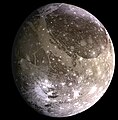טעקע:The Galilean satellites (the four largest moons of Jupiter).tif
מראה

גודל התצוגה המקדימה הזאת מסוג JPG של קובץ ה־TIF הזה: 800 × 262 פיקצעלן. אנדערע רעזאלוציעס: 320 × 105 פיקצעלן | 640 × 210 פיקצעלן.
בילד מיט אַן הױכע רעזאָלוציע (1,830 × 600 פיקסעל, טעקע גרייס: 1.51 מעגאבייטן, טיפ MIME: image/tiff)
היסטאריע פֿון דער טעקע
קליקט אויף א דאטע/צײַט צו זען דאס בילד אזוי ווי עס איז דעמאלסט געווען
| דאַטע/שעה | געמינערטע בילד | געמעסטן | באניצער | קאָמענטאַר | |
|---|---|---|---|---|---|
| איצטיקע | 12:54, 29 דעצעמבער 2011 | 600 × 1,830 (1.51 מעגאבייטן) | Prof. Professorson | {{Information |Description=This composite includes the four largest moons of en:Jupiter which are known as the Galilean satellites. The Galilean satellites were first seen by the Italian astronomer en:Galileo Galilei in |
טעקע באַניץ
דער פאלגנדער בלאט ניצט די דאזיגע טעקע:
גלאבאלע טעקע־פארווענדונג
די פאלגנדע אנדערע וויקיס ניצן די דאזיקע טעקע:
- באניץ ביי af.wikipedia.org
- באניץ ביי als.wikipedia.org
- באניץ ביי ar.wikipedia.org
- באניץ ביי ast.wikipedia.org
- באניץ ביי az.wikipedia.org
- באניץ ביי ba.wikibooks.org
- באניץ ביי be-tarask.wikipedia.org
- באניץ ביי be.wikipedia.org
- באניץ ביי bg.wikipedia.org
- באניץ ביי bn.wikipedia.org
- באניץ ביי bn.wikibooks.org
- באניץ ביי bs.wikibooks.org
- באניץ ביי ca.wikipedia.org
- באניץ ביי cs.wikipedia.org
- באניץ ביי en.wikipedia.org
- באניץ ביי en.wikibooks.org
- באניץ ביי es.wikipedia.org
- באניץ ביי et.wikipedia.org
- באניץ ביי eu.wikipedia.org
- באניץ ביי fi.wikipedia.org
- באניץ ביי fr.wikipedia.org
- באניץ ביי gl.wikipedia.org
- באניץ ביי he.wikipedia.org
- באניץ ביי hi.wikipedia.org
- באניץ ביי hu.wikipedia.org
- באניץ ביי hy.wikipedia.org
- באניץ ביי id.wikipedia.org
- באניץ ביי it.wikipedia.org
- באניץ ביי ja.wikipedia.org
- באניץ ביי kk.wikipedia.org
- באניץ ביי ko.wikipedia.org
באקוקן נאך גלאבאלן באניץ פון דער טעקע.





